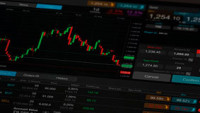 After a positive start to 2017 last week European markets are set to follow on from that this morning and open higher after another record close for US markets last week, in the wake of the US December payrolls report.
After a positive start to 2017 last week European markets are set to follow on from that this morning and open higher after another record close for US markets last week, in the wake of the US December payrolls report.
While the headline figure for last week’s December non-farm payrolls was a little on the low side at 156k, the bigger than expected rise in wages to 2.9% from 2.6%, the fastest since 2011 while seeing bond markets sell-off eventually prompted US equity markets to push up to yet more record highs with the Dow coming up fractionally shy of the 20,000 level, while the S&P500 nudged above the 2,280 level for the first time.
We also saw a record close for the FTSE100 as it closed above the 7,200 level for the first time ever as well as posting a record ninth consecutive positive close, with banks and financials leading the gains on Friday on rising optimism that the final piece of the puzzle in the form of faster wage growth will start to deliver further rate rises as inflation and wages finally start to gain traction.
This has been the missing piece of the puzzle as far as central banks have been concerned for the last eight years, and with US central bank officials now starting to talk in terms of three rate rises this year, the only uncertainty right now lies in the context of the timing, of when we get the first one of these.
Last weeks Fed minutes would suggest that Q1 seems unlikely and last week’s US dollar sell off does appear to reflect that despite Friday’s rebound. Against the Chinese yuan the US dollar had a spectacularly bad week, sliding to its lowest weekly close in eight weeks. While some of that was down to the Chinese central bank tightening monetary conditions, it does raise the question as to whether the long US dollar trade is getting a little crowded.
There is also the small matter that at some point the strength of the US dollar may well start to impact on US corporate profits given that since the beginning of 2014 we’ve seen a 25% appreciation in the value of the greenback.
For now US investors don’t seem too concerned about that prospect so caught up are they in the euphoria of the “Trump trade”, but at some point overseas profits will take a hit in currency terms.
As far as bond markets are concerned, yields still remain below the peaks that we saw in December but any further rise in inflation numbers could well see these numbers revisited, and even surpassed.
This week Chinese CPI and PPI data for December could well provide the catalyst for that given that last month Chinese factory gate prices surged to 3.3%, their highest levels in over 5 years, and quite a turnaround from the negative readings seen in August This week’s December data is expected to deliver a further boost, driven by higher oil and iron ore prices.
On the data front today the main focus will be on German industrial production for November, after factory orders last week showed a sharp decline of 2.5% and retail sales dropped 1.8%.
Industrial production is expected to show an increase of 0.6%, while the latest German trade balance surplus is expected to rise to €20.3bn, further increasing the imbalances at the core of the Eurozone. The current account is expected to rise to €22.4bn.
On the flip side of the coin Italian unemployment is expected to remain steady at 11.6%, and EU unemployment at 9.8%, while youth unemployment is expected to come in much higher.
The pound has slid back sharply overnight and could well find upside progress difficult to sustain this week after weekend comments from UK Prime Minister Theresa May that indicated that the UK may well opt to leave the single market in order to be able to control immigration more effectively.
EURUSD – failed just above the 1.0600 level last week and could slip below the 1.0500 area, which would delay any prospect for a move back towards 1.0700, and suggest a return to last week’s new multi-year low at 1.0340. While below 1.0700 the prospect of a move towards parity still remains.
GBPUSD – pulled back sharply from the 1.2435 area last week and has now slide below the 1.2200 level suggesting a move back towards support at the 1.2080 area. The big support remains back at 1.2080 as we continue to range trade between 1.2100 and 1.2500.
EURGBP – the move through the 0.8580 level suggests a return to the 0.8700 area. Any pullbacks should now find support back near the 0.8580 area.
USDJPY – despite spiking down to the 115.06 level on Friday the US dollar rebounded strongly recovering back through the 117.00 level in the process. Big resistance remains back at the potential double top formation highs at 118.65. We may have to lower the break out support level to 114.80 on the downside.














